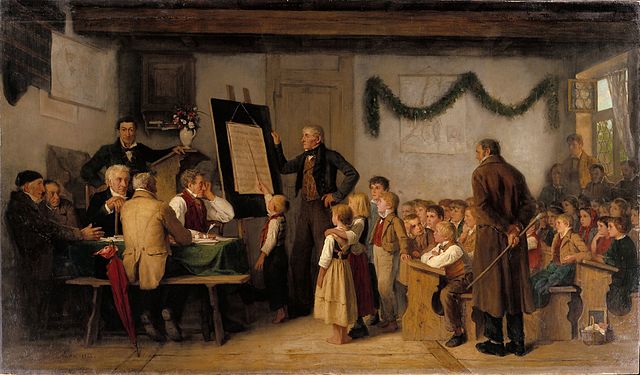Understanding
ability to think about and use concepts to deal adequately with an object From Wikipedia, the free encyclopedia
Remove ads
Understanding is the mental process that helps people make sense of things. It goes beyond just knowing facts, it means you can connect ideas, see how things relate, and apply what you have learned in different situations. For example, if you understand gravity, you do not just know the word, you can explain how it affects planets, falling objects, or even roller coasters. Understanding helps people organize knowledge in their minds so they can use it in real life, not just repeat it from memory.[1][2] One important part of understanding is being able to recognize patterns and relationships. This could mean seeing how Newton’s laws help explain why planets move in orbits or understanding how prices change when supply and demand shift in economics. Unlike memorizing facts, which can be shallow, understanding allows someone to apply what they know in new situations. It means you can explain why something works, not just that it does.[3]

Philosophers have pointed out that understanding is different from just having knowledge. For instance, someone might know a math formula but not understand why it works or when to use it. Thinkers like Wilhelm Dilthey and Catherine Elgin have said that understanding is more about seeing the whole picture and not just knowing pieces of information. It involves reasoning and often cannot be explained in just simple facts or yes-or-no answers.[4][5] Brain research shows that understanding involves parts of the brain like the prefrontal cortex and angular gyrus. These areas help with abstract thinking, putting together information from different sources, and building “mental models”, mental pictures or systems that help explain how things work. For example, when you understand an ecosystem, your brain creates a model of how animals, plants, and weather all interact to keep things balanced.[6][7]
As children grow, their ability to understand things also develops. Psychologist Jean Piaget said that young kids start by understanding things they can see or touch, but as they grow, they learn to think more abstractly.[8] In education, Bloom’s Taxonomy places understanding higher than just remembering, it means being able to explain, interpret, or use what you have learned, not just recall it.[3] In technology, especially artificial intelligence, true understanding is still a major challenge. Computers and language models can copy human-like answers by recognizing patterns, but they often do not really understand what the words mean or how ideas are connected. They can look smart, but they usually do not have the deep thinking or reasoning that humans use when they truly understand something.[9][10] Good teaching helps students build real understanding, not just memorization. Teachers might use concept maps, deep questions, or hands-on projects to help students explain ideas in their own words and connect them to real life. To check for understanding, teachers may use open-ended questions or tasks where students have to solve problems, not just pick an answer from a list.[11]
Feelings and culture also affect how people understand things. For example, some cultures think of time as a straight line, while others see it as a circle, and this changes how people talk and think about the past or future.[12] Stories, emotions, and personal experiences often make it easier to understand and remember ideas, because they connect to things that matter to us.[13] Sometimes, misunderstanding happens when people come from different backgrounds or have different beliefs. In science, some ideas like quantum physics are so strange that our usual way of thinking does not work well. This shows that to understand something deeply, we sometimes have to question our own thinking and look at things in new ways.[14] Understanding also grows over time. As people ask new questions and learn more, they often replace old ideas with better ones. For example, scientists used to believe in Newton’s laws as the complete truth, but later discoveries led to Einstein’s theory of relativity, which gave a deeper understanding of space and time. This shows that understanding is not fixed, it grows as we keep learning and exploring.[15]
Remove ads
References
Wikiwand - on
Seamless Wikipedia browsing. On steroids.
Remove ads
